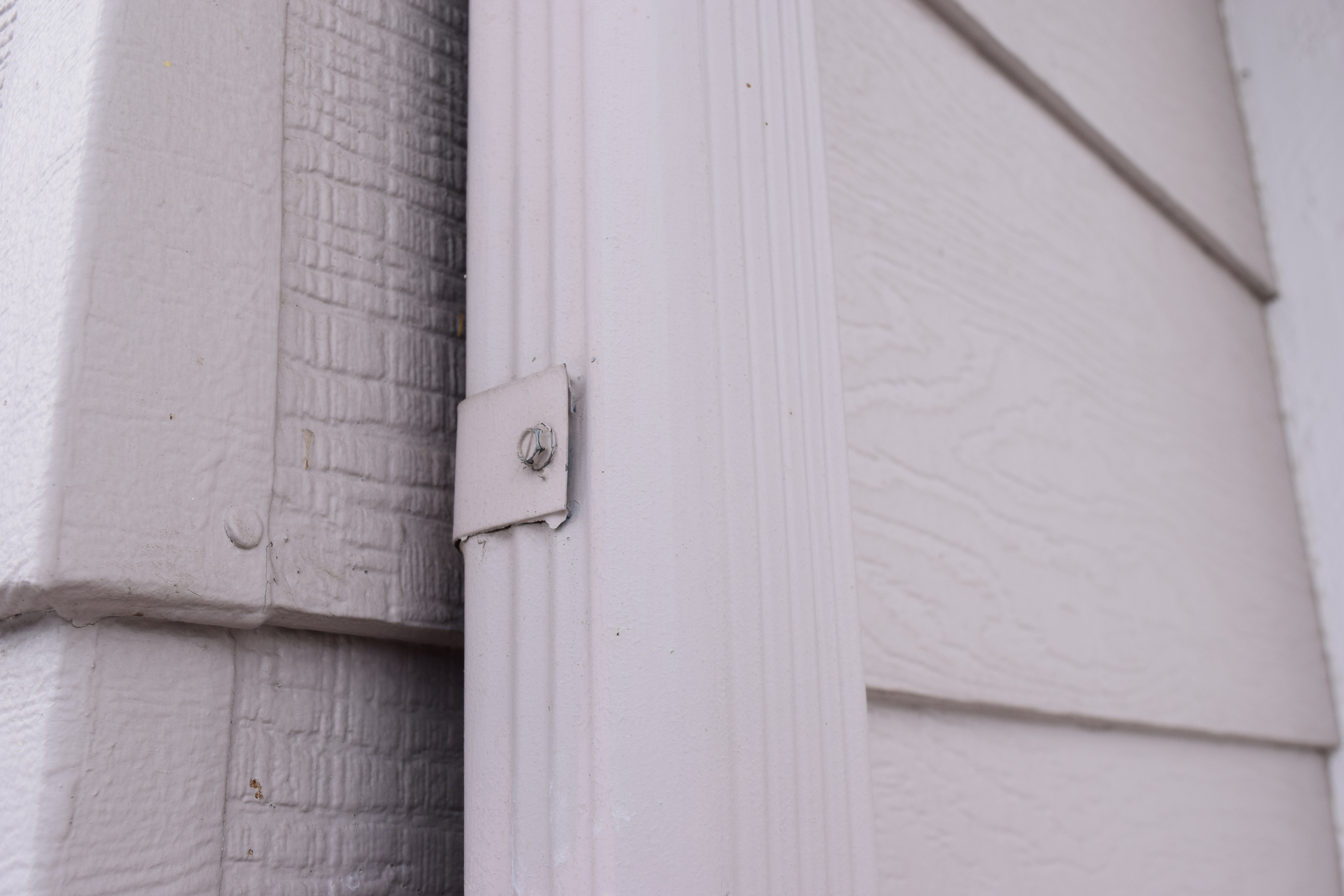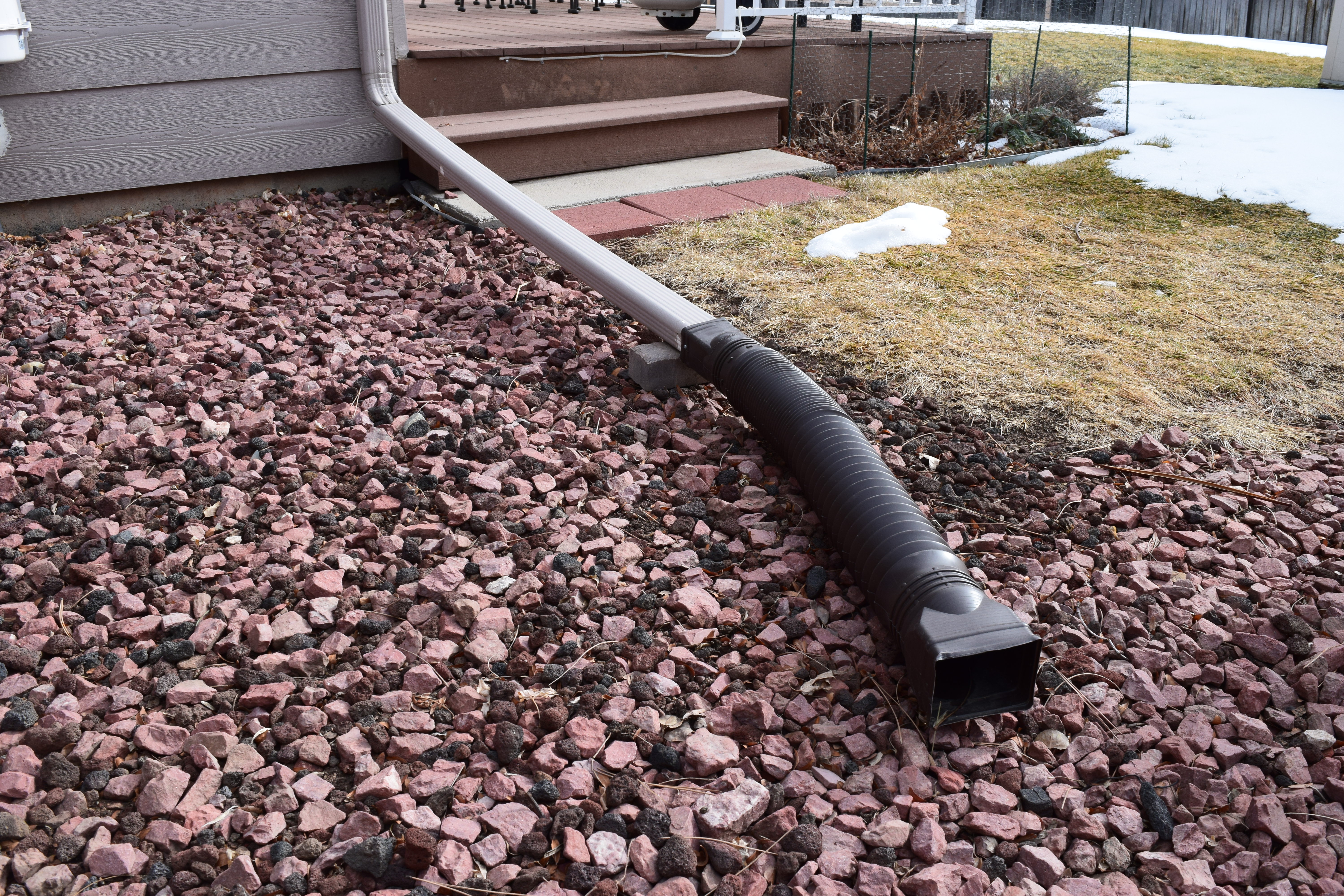What are those channels on the edge of my roof that carry water?
A rain gutter, eaves trough, eaves-shoot, or surface water collection channel (roof drainage system) is a component of a water discharge system for a building to channel water away from the structure. The purpose of a downspout connected to the gutter is to allow water to reach the ground without dripping or splashing down the building structure. Downspouts are usually vertical and usually extend down to ground level, although they may be routed at an angle to avoid architectural features and may discharge onto an intermediate roof. (Wikipedia)
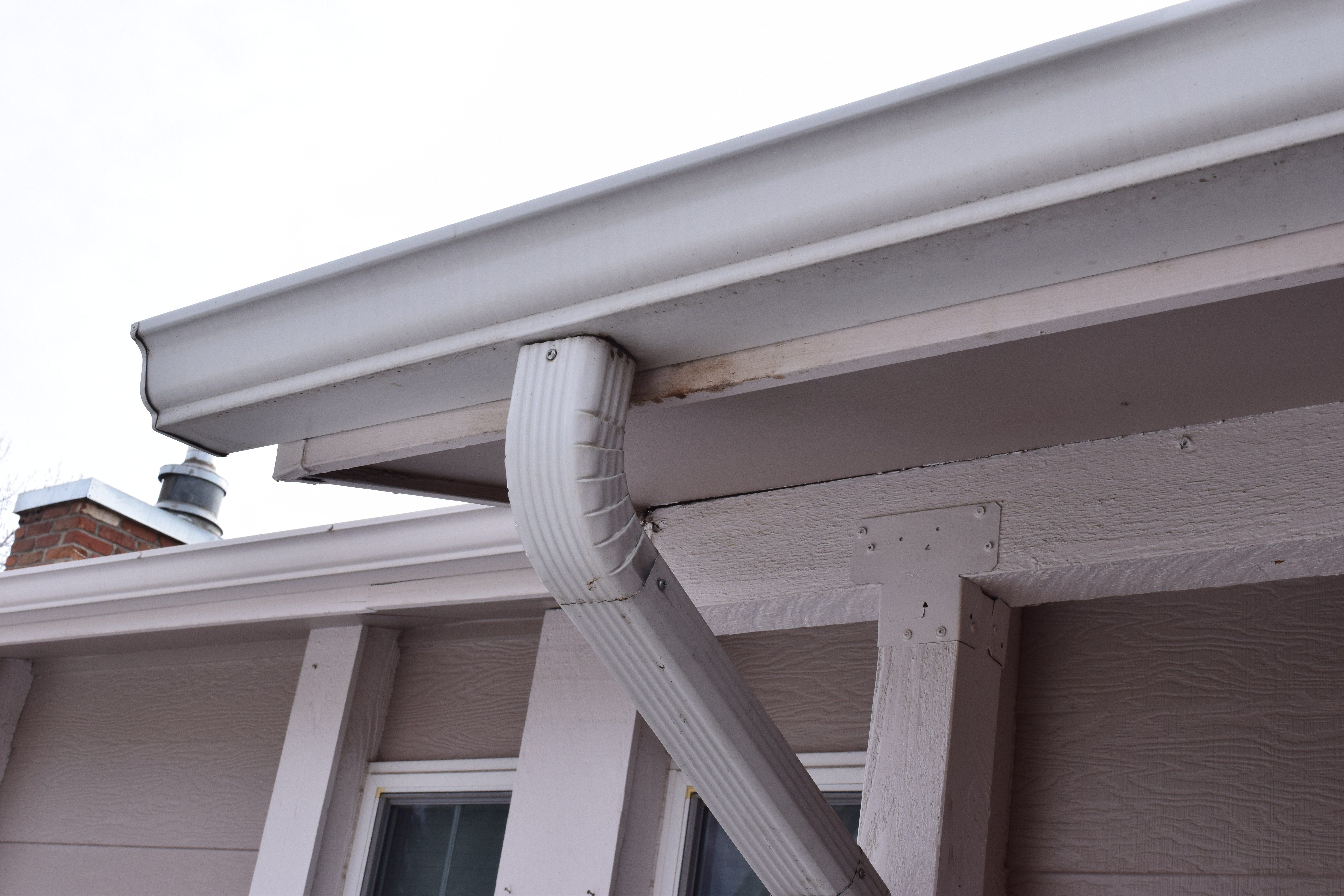
These are attached to the fascia at the edge of sloped roofs, behind the roof drip edge flashing with clips or spikes and ferrels. If you have a flat roof, you may only have collector boxes with downspouts attached. Generally, you will have seamless gutters or jointed sections, typically made of aluminum; some vinyl or copper gutter systems are installed on some homes. Performing regular maintenance is very important to prevent damage & costly repairs to your home.
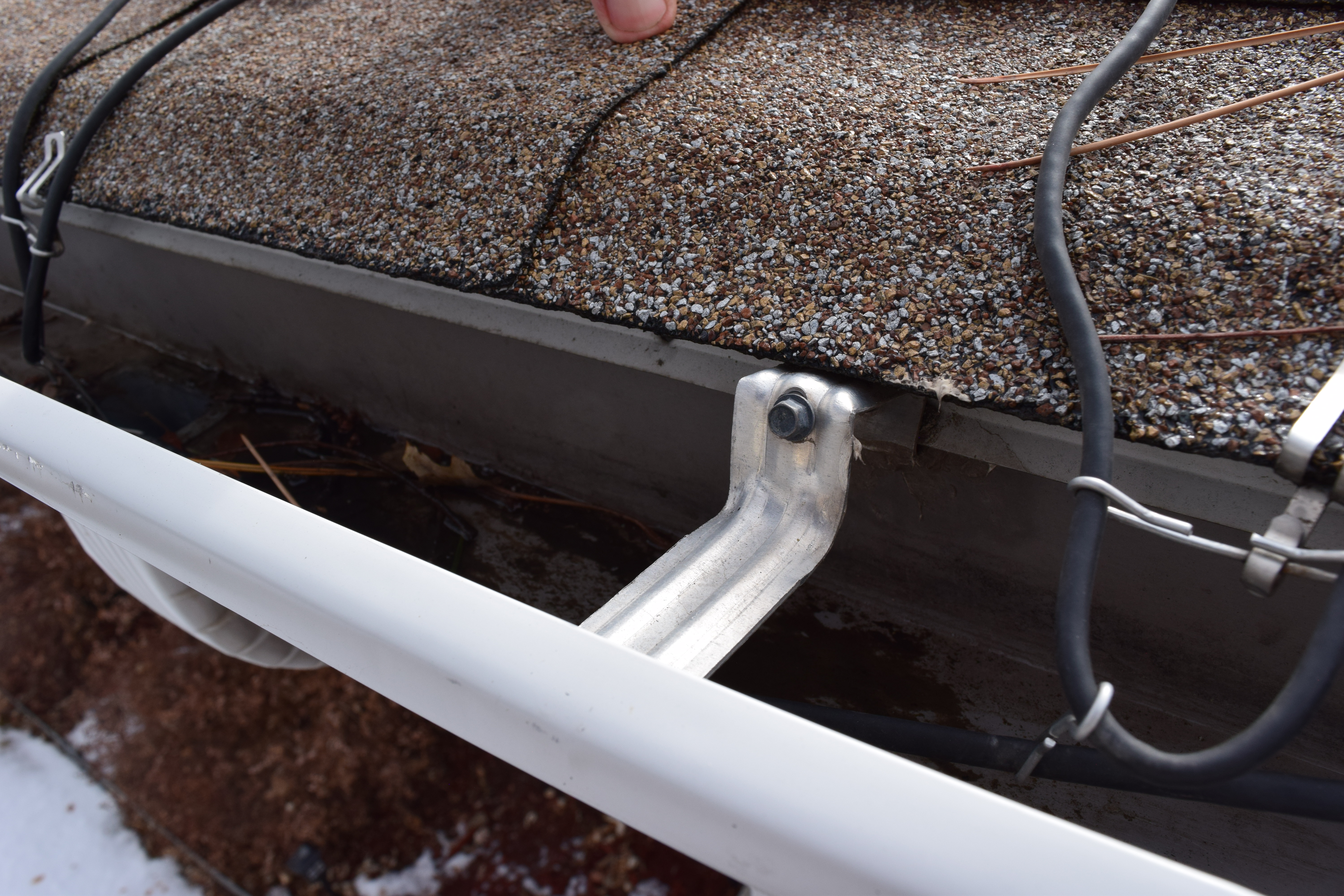
Safety when cleaning
Wear heavy gloves for protection. There can be sharp objects such as thorns, debris, and sharp metal edges. If you are not comfortable working on a ladder or from up on the roof, you should hire a gutter maintenance company to perform the service.
How to clean gutters of debris
The roof drainage system will collect leaves, twigs, roof debris, and other items that can clog it up. Clogged gutters can cause damage to your home. You can use a handheld blower, wet/dry vacuum, or a gutter scoop. From the edge of the roof, lean an extension ladder to the roof, extending three above the edge. Using one of the items above, remove the debris from a section you can easily reach, then move the ladder to the next section. If using a scoop, it is best to have a bucket or pail to place the debris in. If you are not fearful of heights and your roof is low sloped, you can get on the roof and work from the edge, however, it is more dangerous. If you decide on this method, you should use a roof safety harness and tie-off system to protect you from falling. Most homeowners do not have the proper equipment for this, so working from a ladder is best.
Frequency of cleaning
Roof drainage systems should be cleaned twice a year, typically in the Spring and again in late Fall after most of the leaves have fallen. Keeping your system clean will prevent water damage to your home. If you have a lot of trees near your home, more frequent cleaning may be necessary.
If you have gutter guards over the top, the system may not require as frequent cleaning but should be inspected and flushed at least annually. Even with gutter guards, dirt and grime can still build up and prevent proper drainage.
Sealing leaks
Over time, roof drainage systems can develop leaks. If you notice this, leaks should be repaired to prevent damage to your home. Use of gutter repair sealant can repair most leaks and is available at most home centers, Amazon, and hardware stores. For pinholes, use the gutter sealant, following directions on the label. For larger holes, use a durable material, like aluminum foil or fiberglass tape, or material recommended on the sealant label, and follow the product directions. seal.jpg
Inspect and Unclog the downspout
If you do not have filter screens at the downspout to gutter connection, these vertical tubes can become clogged with debris. Typically running a garden hose down the tube will flush out the debris. If the tube will not flush out you will need to disconnect elbow(s), and remove the debris manually. Elbows are typically connected with screws, however, they may only be pressed together. Most have been painted so you will need to break the paint seal first; use a putty knife at the joint to break the seal. If you need to remove the downspout from the wall, they are secured using straps and screws.
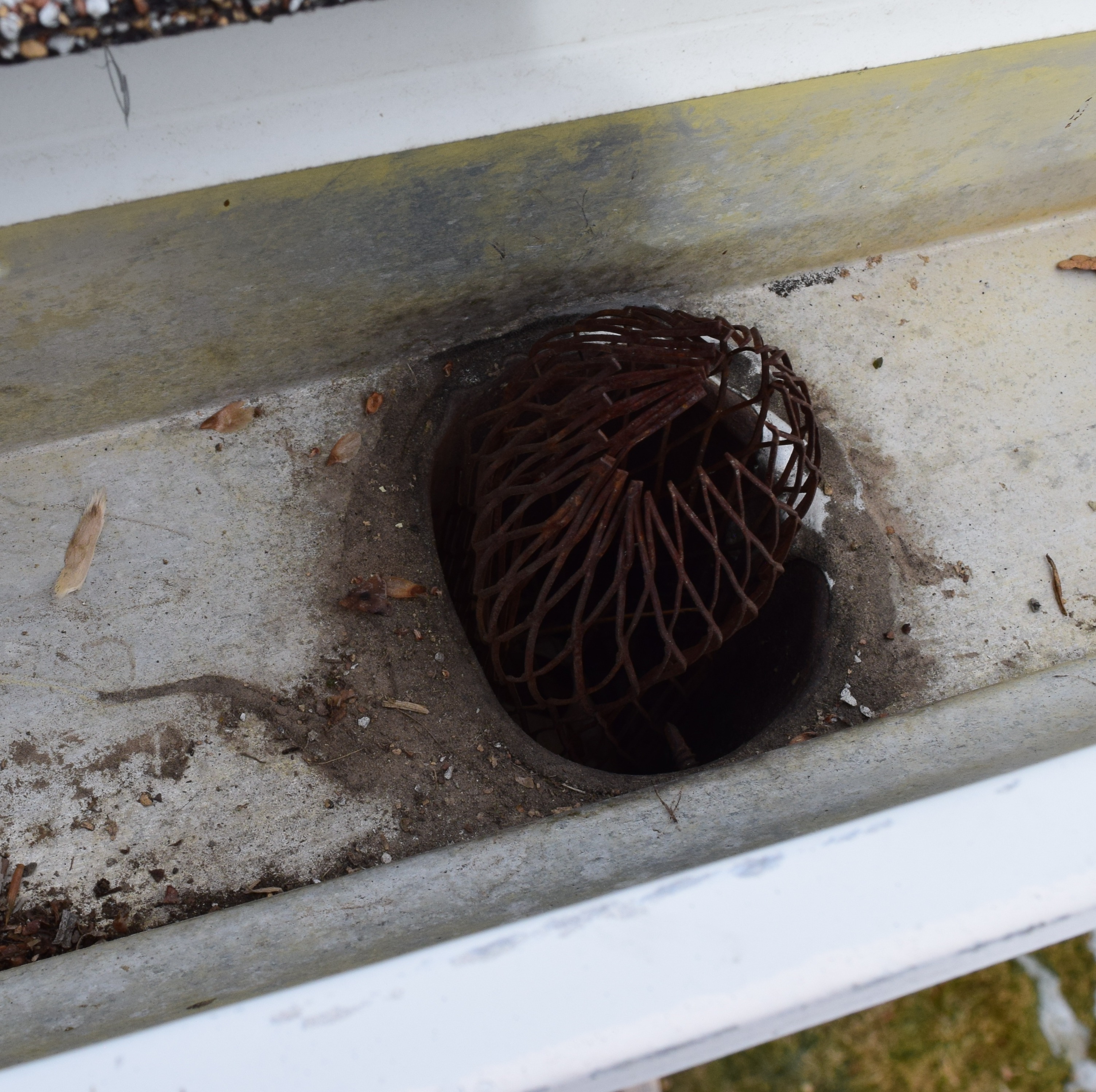
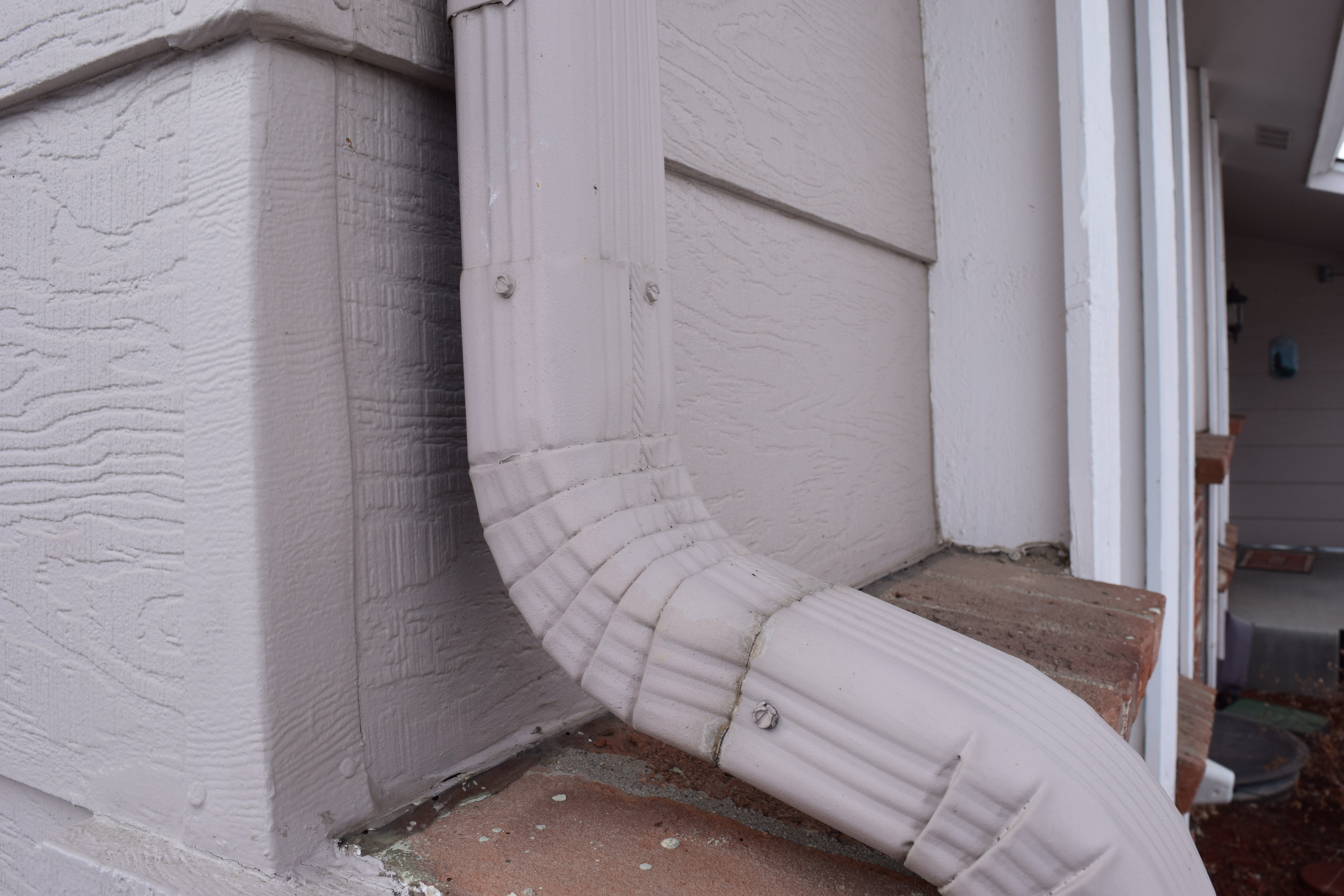
Joints
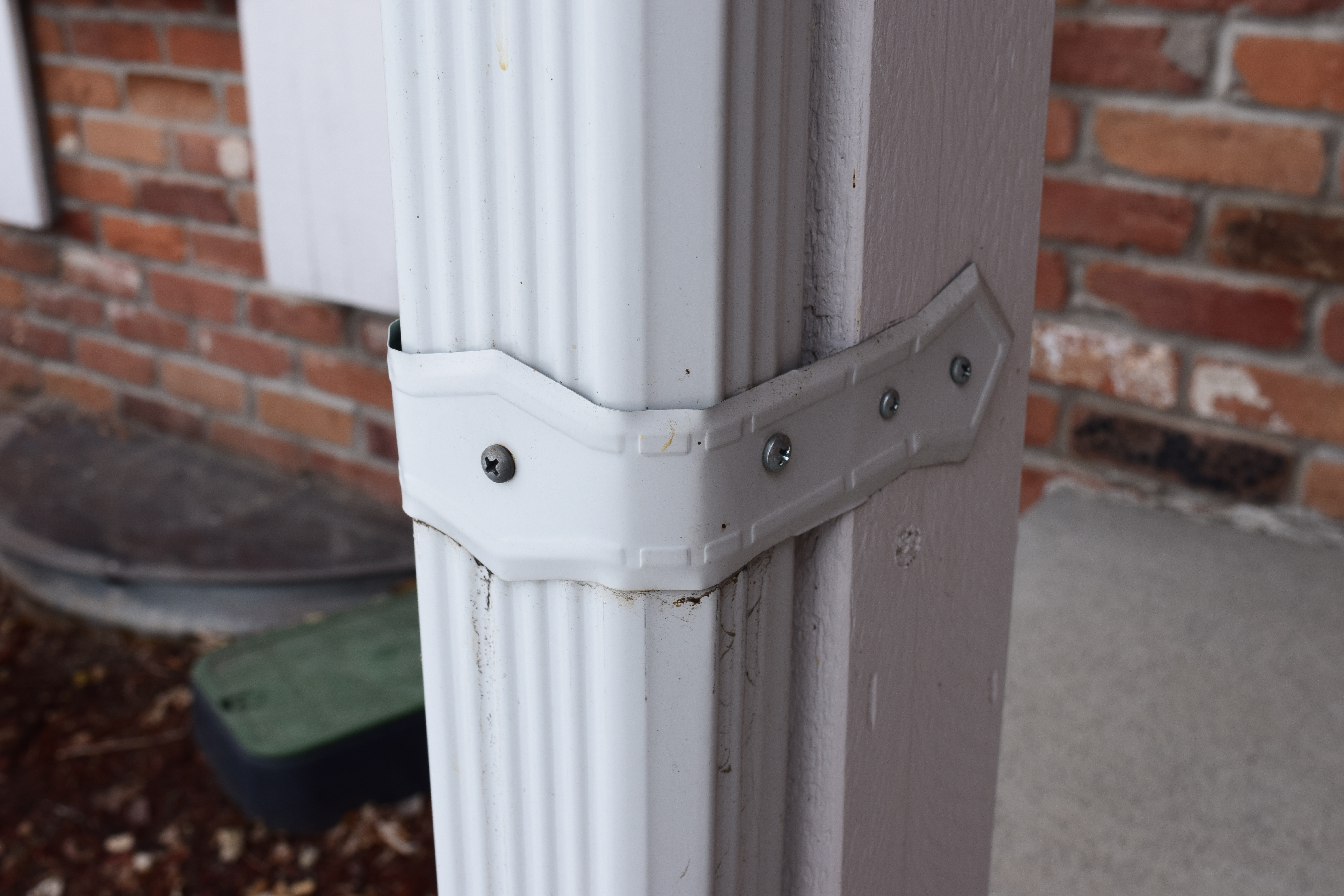
Inspect & secure the gutter
While you are cleaning, inspect the hangers or spikes & ferrels that secure the gutter to the fascia, and the downspout straps. Re-secure any that are found loose. Replace any that are damaged or broken. Screws, over time, can rust and may need replacing.
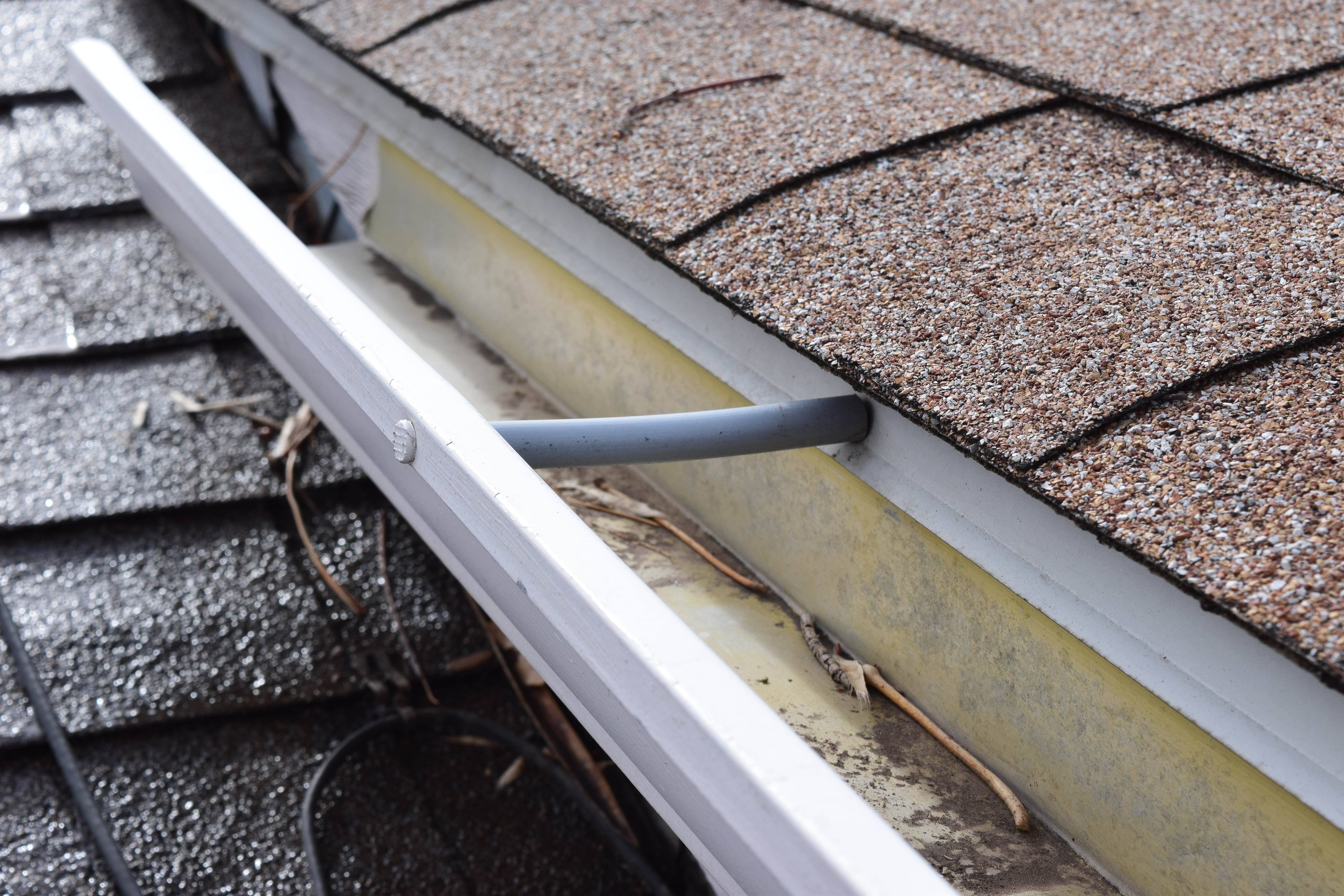
Check Landscape
Check your landscape slope for 1" per foot of drainage away from the foundation. The landscape should NEVER slope towards the foundation; this could result in serious damage. Correct slope and drainage as needed. The downspout horizontal extension tube at the landscaping should extend 5' out from the foundation for best results, and terminate in a splash block at the end of the extension. If your system attaches to a below-grade drainage pipe, check the attachment point and flush or use a drain auger if the clog is stubborn and observe where the underground drainage system daylights. You may need to disconnect the downspout from the underground drainage pipe to flush it.
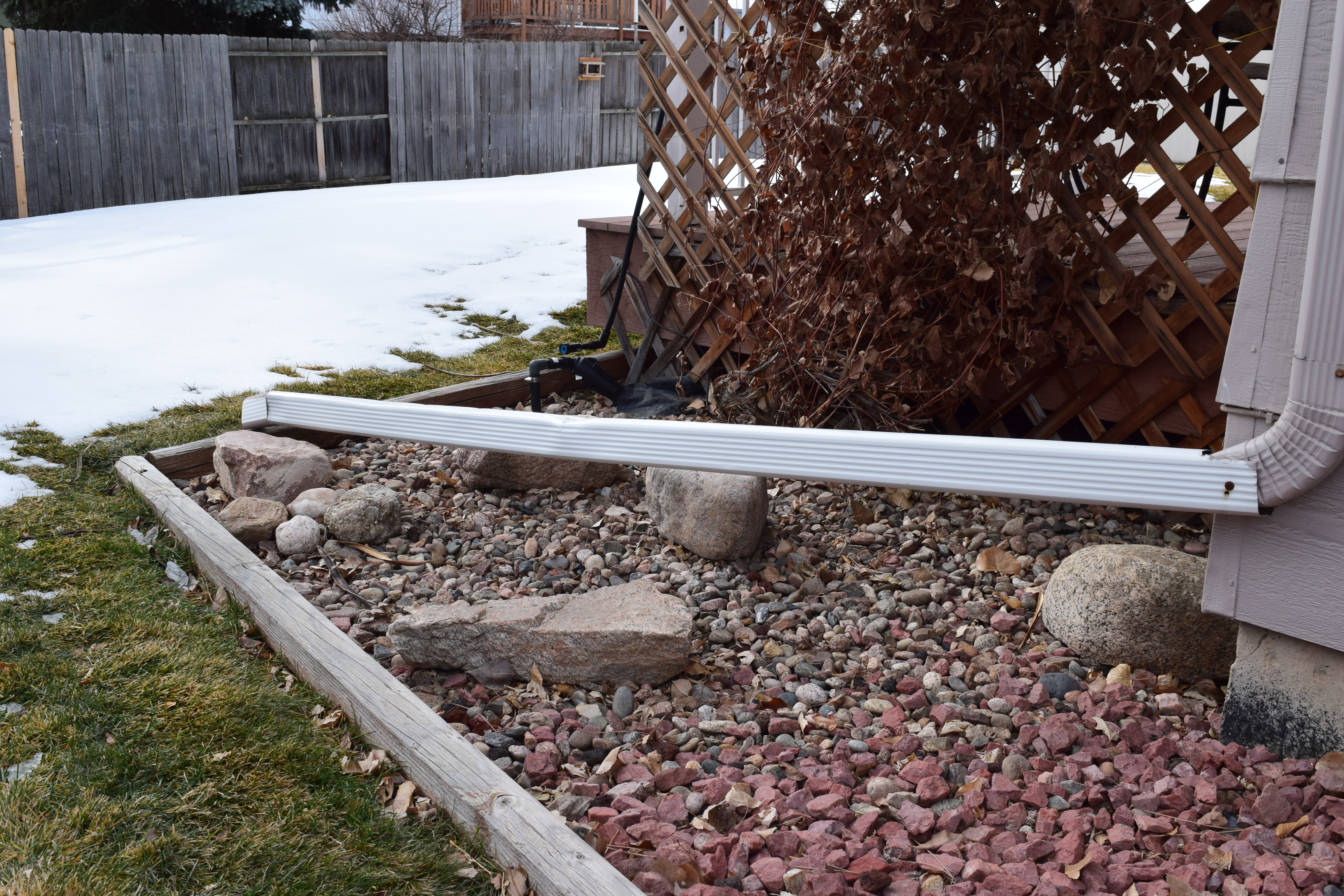
Downspout with Extension
Tools
To complete the maintenance, you will need the following:
Screwdriver - Phillips or Flat
How often should gutters be replaced?
The life expectancy of gutters and downspouts depends on your location, climate, and frequency of maintenance. These systems can last for 20-30 years if taken care of properly. If you need to have your roof covering replaced, many roof companies will recommend replacement at that time. If your roof drainage system is in good shape, many times they can be removed (carefully!) and then reinstalled after the roofing is complete. Many roof companies do not want to do this and will charge extra. Check the cost of removal/installation versus full replacement costs.
Do I need gutters around my entire house?
Gutters should be placed at the bottom of the roof slope at the eaves above landscaping or walkways and driveways. IF an eave terminates above a lower roof, gutters may not be necessary. Roofs are designed to direct water down the slopes. Gutters are not installed on the edges of sloped gables (the triangular portion between the edges of intersecting roof pitches).
Neater Nest is a participant in the Amazon Services LLC Associates Program, an affiliate advertising program designed to provide a means for sites to earn advertising fees by advertising and linking to amazon.com

